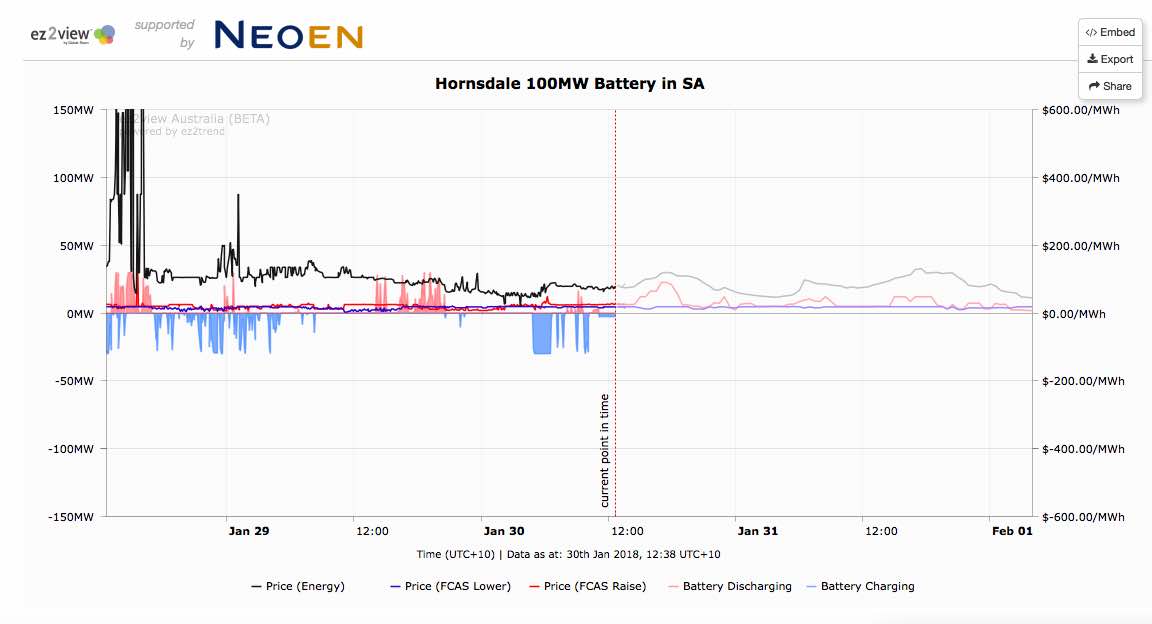The response to the Tesla big battery has been so immense that the owners and operators of what is known officially to the market as the Hornsdale Power Reserve have published a widget to enable the operations of the facility to be monitored.
The widget appears on the home page of the Hornsdale Power Reserve, owned and operated by Neoen Australia, and has been developed by Global Roam, who also provide the popular NEM-Watch widget on RenewEconomy.
The Tesla big battery has impressed observers and many in the electricity industry with the stunning speed of its response, the rapid charge and discharge, and its ability to hit peak about from a standing start in a fraction of a second.
The newly installed widget also highlights the shift of the battery from its phase of trial and experiment to some serious money-making, as highlighted in recent RenewEconomy articles, charging mostly at low price intervals and discharging at higher price.
The widget provides prices for the wholesale market, and also the FCAS raise and lower markets which also account for some of the battery’s activities (FCAS stands for frequency control and ancillary services).
Some of the battery’s activities are also influenced by its contract for the South Australia government, for which it provides emergency standby in case of a system fault.
This may explain some of its bidding at market caps of $14,200/MWh – which is required to do under the state government contract so as “not to interfere in the market”. (The emergency diesel generators also operate on the same basis, only to be used in an emergency, so not involved in actual bidding).
However, such distinctions are not obvious to the casual observer who could find it difficult to discern between bidding under the state government or market plays in the wholesale market.
Remember, the Tesla big battery does both, but the market remains opaque, even if certain activities like this one are graphed in real time.







